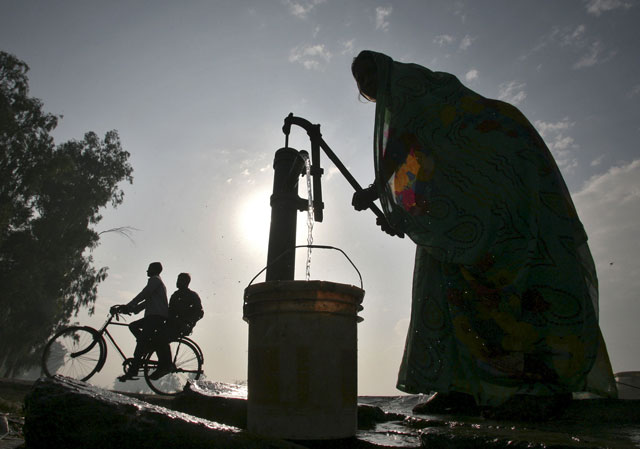
Back-to-back droughts for the first time in nearly 30 years mean some rural areas in the north are running out of water for human consumption and agriculture, prompting warnings of serious consequences if urgent action is not taken.
"It is unlikely that India will have another drought next year; three years in a row has never happened before," said Ashok Gulati, a farm economist who advised the last government.
'Life on planet at stake', France warns as climate ministers meet
"But with extreme events increasing due to climate change, you never know. If we don't wake up now then, God forbid, people will leave farming to become labourers at railways stations."
With more than two-thirds of the 1.25 billion population living off the land, water scarcity could affect the majority and hit long term food supplies.
As world leaders meet in Paris next week to agree a deal on cutting greenhouse gas emissions, India says climate change is already hurting the agriculture and water sectors, and the impact is amplified by poverty and a heavy reliance on farming.
Locally, officials are trying to change farming habits and enforce stricter rules on water usage. "We are encouraging crop diversification; we are going for pulses," said Amit Kishore, chief development officer in Rampur, a farm belt city in the northern state of Uttar Pradesh.
"We have been trying to convince farmers to shift to horticulture as well, but the uptake has not been satisfactory." Four out of Rampur's six administrative areas are so-called "dark zones", with 80 per cent or more of groundwater exhausted.
In those zones, the practice of boring wells has been banned this fiscal year. Without urgent action, the region risks going the way of Punjab and Haryana, two parched states where the groundwater has sunk even further.
World leaders back drive for Paris climate deal
Some farmers in those states now need to dig 300 feet (91 metres) for water, compared to five feet (1.5 metres) in the 1960s, according to research by a local government scientist.
Rice sells
Indian Prime Minister Narendra Modi has urged farmers to use water wisely, advocating a "per drop, more crop" approach that includes water-saving methods like drip irrigation.
Yet his 18-month-old government has also boosted incentives to grow water-intensive rice, wheat and sugarcane that India exports, at the expense of crops like oilseeds or pulses that it has to import. Little wonder some farmers in the northern farming belt are ignoring the advice of local officials.
"We grow rice because that is what sells," said Babu Ram Saini, standing by a pond in Jiwai Jadid village in Rampur. "Productivity for lentils is so low that we'll not be able to sustain ourselves without massive government support," he said.
Some experts are advocating tougher measures to force more efficient use of water. Wastage is encouraged by the supply of free or subsidized power which boosts politicians' popularity.
"We have been trying to tell farmers that if you continue growing rice, more places are going to become dark zones," said VK Mishra, a regional head of the Central Soil Salinity Research Institute in Uttar Pradesh's capital Lucknow.
Environment protection: ‘Pakistan highly vulnerable to climate change’
"We should make a law that you can't grow rice in areas where the water table is very low." Rice covers 62 per cent of Punjab's area under cultivation, up from 10 per cent in 1970. The expansion of rice has been similar in neighbouring Haryana.
Though the droughts have hit crops, India still produces more rice, wheat and sugar than it consumes, drawing accusations from the World Trade Organisation that stockpiling to provide cheap grain to the poor unfairly distorts trade.
"It is quite natural for our farmers to go for rice and cane when both power and water are almost free," said economist Gulati, adding that selling such produce abroad is like exporting "precious water for free".





1730884134-0/BeFunky-collage-(26)1730884134-0-270x192.webp)




1732618327-2/Untitled-design-(7)1732618327-2-270x192.webp)






COMMENTS
Comments are moderated and generally will be posted if they are on-topic and not abusive.
For more information, please see our Comments FAQ